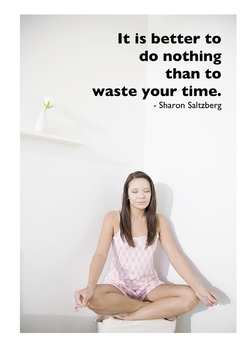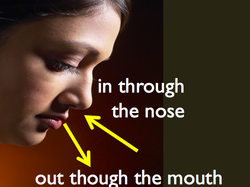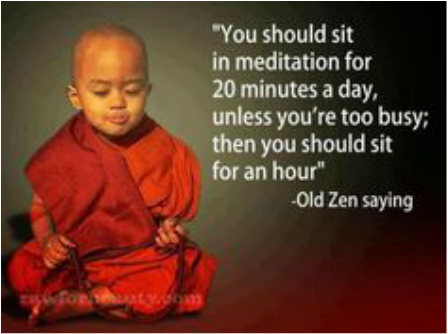- Home
- Awe (NEW 7/24)
- This ain't "happy-ology"...
- Philippiness 2/23 Science of Happiness - Class & Life
- SofH - class & life Spring 2022
- NEW - Time Confetti
- NEW - Happiness Hacks
- NEW - The Power of Fun
- Getting started
- Introducing happiness
- Main Activity Download Center
- 10 Minutes for Happiness (quick tasks)
- Happiness Haiku (consolidation)
- Positive brain chemicals
- New! 3 minutes for positivity
- Becoming Friends
- Savoring
- 5 photos (A savoring task with student projects)
- Flourishing
- Flow
- Positivity
- Laughter
- Meditation
- Mindfulness for kids
- Balloon toss (icebreakers)
- Song/lip dub (Marc's Ss): Pharrell William's HAPPY
- Activities from other teachers
- Don't laugh at me
- Videos of Marc's Talks
- Posters
- Bookshelf (NEW books listed)
- Links
- NUFS MA TESOL task page
- English Firsthand syllabus tie-in
- Monk for a Month (mindfulness)
- Misc PowerPoint downloads
- Contact Marc
- .
- InnovationsPosPsych downloads
- Positive Psychology in SLA (book)
- ..
- NEW BOOK
- test page
- songs for distance teaching
NEW Meditation

How does one connect meditation to learning English? My best suggestion is indirectliy. In my courses teaching English in Japan, we use a lot of positive psychology activities. Which means, we sometimes try things that might seem unusual in an English class. As students try new things and understand why they might be useful, they are usually willing to try more new things. Also, I've been meditating daily for over 40 years. I find it useful. When they understand that, they are often willing to at least give it a try. Printing the "It's better to do nothing than to waste time" as a poster and putting it on my office door also sometimes starts the conversation.
CLICK HERE for a pdf copy.
CLICK HERE for a pdf copy.
deep breathing

One way into the topic is through deep breathing (also called yoga breathing.) My students sometimes have to deal with high stress situations like taking big tests (TOIEC, TOEFL, etc.), job interviews, etc. Deep breathing is one thing they can do privately, in public. By that, I mean they can do it in a room full of people, and no one will notice. I use this graphic (right). I teach them to breath out though the mouth and in through the nose. The mouth is bigger than the nostrils so they get more fresh air and oxygen. It is also a good idea to hold their breath between inhales and exhales. I start with a pattern like this:
Exhale 2-3-4-5-6
Hold: 2-3-4-5
Inhale: 2-3-4
Hold: 2-3-4-5
(continue)
Eating a blueberry with mindfulness. In our first year reading classes, we do a three-week (one class per week) unit on traditional Asian healing. The first week, they watch (with English subtitles) a section of the Bill Moyers Healing and the Mind video showing Jon Kabat-Zinn leading an "eating meditation" using a raisin. HERE is a short (4 minute) video adaption of that meditation, not from Kabat-Zinn. I suggest you watch it as a model, but use the script below and do it live. The script is designed for our students -- it is simple. We then do it ourselves, with the teacher guiding the student through a "blueberry meditation". The script for that is here. (If you use the Moyer's video, the part we use it at the beginning of Vol. 3: Healing from within).
Next, they read about metta (loving kindness compassion) meditation. The reading is here. (A version with a few key words glossed in Japanese is here.) Once they have read about it, they can try it themselves. Either the teacher leads them though it or use a version on youtube.
I find metta (loving kindness compassion) meditation useful because there is more language (and I am using this to teach English!). Also, it is more concrete and easier than some types of meditation such as mantra meditation or concentration meditation. I you are interested in some research-related writing about this, see Barbara Fredrickson's Love 2.0 or Richard Davidson's The Emotional Life of Your Brain. Both Fredrickson and Davidson are respected researchers. Fredrickson's book is a bit more practical.
Exhale 2-3-4-5-6
Hold: 2-3-4-5
Inhale: 2-3-4
Hold: 2-3-4-5
(continue)
Eating a blueberry with mindfulness. In our first year reading classes, we do a three-week (one class per week) unit on traditional Asian healing. The first week, they watch (with English subtitles) a section of the Bill Moyers Healing and the Mind video showing Jon Kabat-Zinn leading an "eating meditation" using a raisin. HERE is a short (4 minute) video adaption of that meditation, not from Kabat-Zinn. I suggest you watch it as a model, but use the script below and do it live. The script is designed for our students -- it is simple. We then do it ourselves, with the teacher guiding the student through a "blueberry meditation". The script for that is here. (If you use the Moyer's video, the part we use it at the beginning of Vol. 3: Healing from within).
Next, they read about metta (loving kindness compassion) meditation. The reading is here. (A version with a few key words glossed in Japanese is here.) Once they have read about it, they can try it themselves. Either the teacher leads them though it or use a version on youtube.
I find metta (loving kindness compassion) meditation useful because there is more language (and I am using this to teach English!). Also, it is more concrete and easier than some types of meditation such as mantra meditation or concentration meditation. I you are interested in some research-related writing about this, see Barbara Fredrickson's Love 2.0 or Richard Davidson's The Emotional Life of Your Brain. Both Fredrickson and Davidson are respected researchers. Fredrickson's book is a bit more practical.
Yoga

During the next reading class, we introduce yoga. We use this handout. We start by identifying body parts. Then they do a short pairwork where they teach each other a yogic breathing exercise. Then, in pairs, they learn a yoga pose from a series of yoga cards that I bought. There are many sets available. The ones I use are here and here. They teach each other the poses (nothing too challenging)
During the final class of these unit, we do some basic Thai massage. Sorry, I don't have any materials I can share for that.
During the final class of these unit, we do some basic Thai massage. Sorry, I don't have any materials I can share for that.

There's a great site called "Live and Dare" that has lots of information on meditation for beginners. Click on the logo to go there. One thing I particularly like is the explanations of different types of meditation. There are many, many ways to meditate. CLICK HERE to go to that page. (Note: I don't have anything to do with the site. I just find it useful and wanted to share it).
Also, CLICK HERE for a link to an Upworthy site with lots of good information on the science behind meditation. Probably too difficult for most students but you might find it interesting.
Also, CLICK HERE for a link to an Upworthy site with lots of good information on the science behind meditation. Probably too difficult for most students but you might find it interesting.

